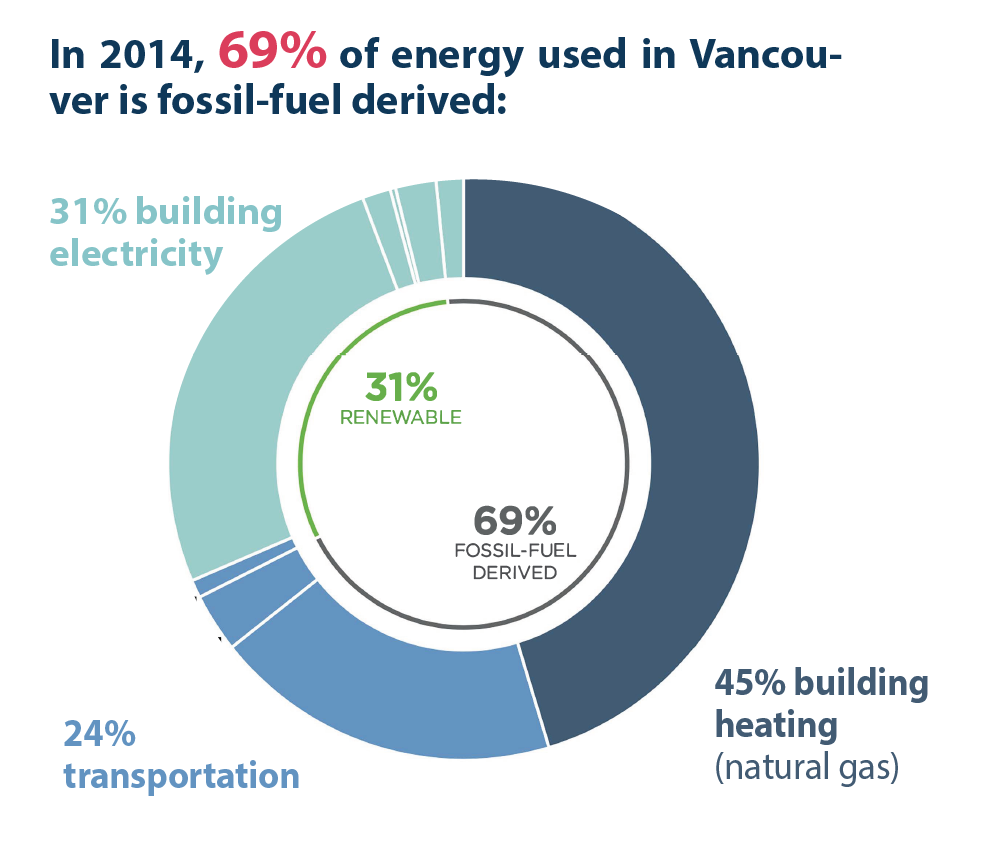

The main CAUSE of climate change is carbon emissions produced from human activities (e.g. driving cars, building houses) which adds to the greenhouse effect, trapping heat, and further warming the Earth's surface. Canada has commited to keep global warming to below an increase of 2 degrees celcius (relative to preindustrial levels).

British Columbia has commited to reducing its carbon emissions to:
40% below 2007 levels by 2030
60% below 2007 levels by 2040
80% below 2007 levels by 2050
More Floods & Droughts
Hotter, drier, summers & more intense rainstorms will cause more severe and frequent floods and droughts.
Rising Sea Level
Estimated increase of sea level in coastal BC by 2100 is 1m or more. We will lose homes, communities, and ecosystems (an estimated total damage $30 billion by 2050).
The urban forest includes a variety of vegetation and landscape types such as parks, streetscapes, natural areas, and
private yards, which together form a complex system of urban greenery.
A healthy urban forest will be vital in a hotter, unpredictable
future to protect human health during heatwaves, reduce our reliance on air conditoning, reduce flooding, absorb carbon, and provide
habitat to wildlife. An urban forest also increases property value and happiness. Our gardens can further help us adapt to climate change by growing food (reducing
reliance on imported produce).

11% of canopy on streets
27% of canopy in parks
62% of canopy on private property
Vancouver aims to increase tree canopy from 18% to 22% by 2055
through better management and replanting 150,000 trees by 2020.
"Over the past two decades, 23,490 healthy, mature trees were removed from private properties (including residential,
institutional, commercial and industrial land). In 2013...about 5 healthy, mature trees were removed everyday."
-- City of Vancouver

54,000 (36%) TRESS ON PRIVATE LAND
45,000 (30%) STREET TRESS
45,000 (30%) TRESS IN PARKS
6,000 (3%) TRESS ON OTHER PUBLIC LAND

BC's carbon reduction targets and tree planting targets are for all of our benefits; we must do our share to keep below 2°C of warming.
We also need to prepare for the impacts of climate change. We can begin to cut our emissions, for example, by taking
better care of trees in our neighbourhood, switching to renewable energy sources, driving less, or switching
to hybrids or electric vehicles, and taking better care of our neighbourhood trees.
Renewable energy is the energy generated from natural processes that are continuously replenished. This includes sunlight,
geothermal heat, wind, tides, water, and various forms of biomass.
Renewable energy will become one of the most effective tools for us to combat climate change as these sources replace traditional carbon-intensive
fossil fuels, which are the main cause of anthropogenic climate change. Furthermore, these technologies can save us money and increase job opportunities in the long run.
Learn more about Renewable City Strategies here
UBC CALP team has also developed a tool called Community Energy Explorer (CEE), which is a web resource designed to provide communities and citizens with information and tools for local energy planning and carbon emission mitigation. Learn more about CEE here, and why we need to switch to renewable energy here.

Vancouver aims to:
1. Derive 100% of the energy used in Vancouver from renewable sources before 2050.
2. Reduce greenhouse gas emissions by at least 80% below 2007 levels before 2050.
-- Renewable City Strategy

Why do we need renewable energy?
Renewable energy sources diversify and localize energy supplies, emit little or no carbon into
the atmosphere, and lower the costs of building maintenance. They are also less detrimental to human and environmental health than fossil fuels.
Why does Vancouver aim to achieve this goal?
Metro Vancouver has massive capacity (rich in natural resources such as wind power, hydrology, and biomass) to provide
its own renewable energy within the region, but currently this potential is underutilized. As cities continue to grow,
we must look at local sources of heat, cooling, and electricity that are sustainable in the long-term.